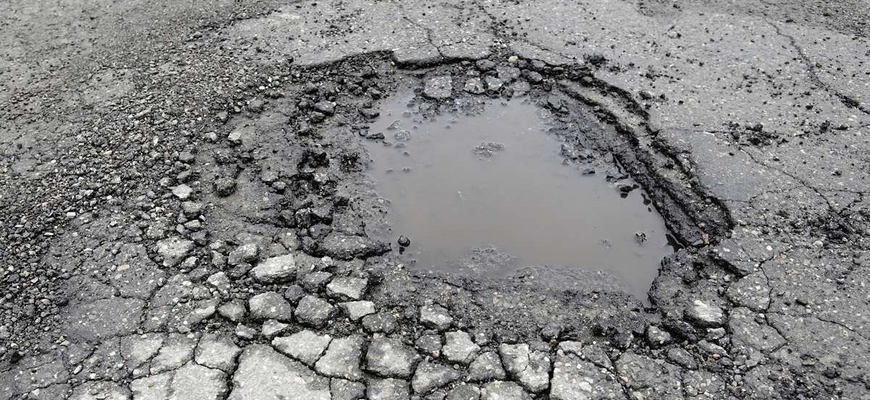
Plotting a pothole-free future
Civil engineer assisting SC DOT with new predictive model for pavement
Posted on: October 21, 2019; Updated on: October 21, 2019
By Chris Horn, chorn@sc.edu, 803-727-9875
It’s one of the nation’s smallest states, but South Carolina has the fourth-largest state-maintained highway system in the country. And those nearly 91,000 lane miles of pavement are deteriorating faster than ever, thanks to record numbers of cars and trucks on the road.
Nathan Huynh doesn’t have a magic formula to fix the roadway wear and tear, but he hopes to use his modeling skills to help the S.C. Department of Transportation develop a better statistical formula for predicting the long-term health of the Palmetto State’s pavement.
“Typically, a newly resurfaced road looks great and feels smooth for several years, and then, over time, it begins to break down,” says Huynh, an associate professor of civil and environmental engineering at the University of South Carolina. “Plotted out on a graph, it’s not a steady straight-line decline — it’s more of an S-curve.”
The Department of Transportation has used that curve for 20 years to predict pavement health, Huynh says, and they realize it’s time for a refresh. “They want to be able at any point to know what the pavement quality index will be for a given road.”
That kind of predictability will allow the transportation department to better plan for road maintenance and schedule repairs before the quality of a given stretch of road becomes untenable. Huynh’s study will look at new and existing roads and the treatment techniques used to rehabilitate the pavement.
“The typical ‘mill and fill’ — grinding off and replacing the top two inches of asphalt — is appropriate most of the time but not always,” says Huynh, adding that a road’s deterioration is sometimes the result of a poor foundation. “When you see furrows in a road, it’s usually because of problems in the underlying foundation or soil.”
Huynh is also working on another project for the S.C. DOT to determine if it is cost-effective to conduct field investigation to assess pavement structural quality. He and his colleagues were recently selected by the department to perform research that will deploy a weighted truck equipped with sensors and lasers to gather pavement functional and structural data on the state’s roads. This will help create a baseline of the state’s road health and improve the selection of roadways for rehabilitation. Improvement of this process will help S.C. DOT optimize its engineering, construction and maintenance funds.